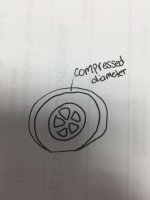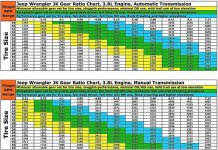Sh0rtBus
LOSER
Measure from the center of your wheel to the ground and x2. Tell me that you still get 36.5". Most every 37" tire I have seen has an actual measurement closer to 35". But hey, what do I know.
I didn't think to measure like that, that makes a lot of sense considering only the bottom side of the tire is being compressed at any given time
I actually measured the diameter across the face of the tire from the floor to the top of the tread. Wouldn't taht make the most since, as it's a true measurement, rather than measuring half the tire and then multiplying it by two? WHy owuldn't you measure from the floor to the top of the tire?



